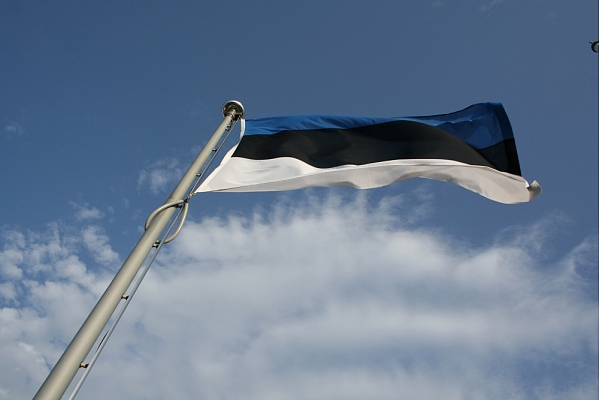Business environment in Estonia
* foreign investors have rights and obligations equal to those of the local entrepreneurs in Estonia;
* foreign investments are protected by international agreements as well as the Estonian law;
* business entity may be established online in less than hour; it is also possible to establish a company with only 1 EUR as a share capital.
In general, free enterprise and trade, as in other EU countries, characterize the business environment in Estonia.
* For historical, socioeconomic, geographic and other reasons, some service and manufacturing sectors are monopolies, mainly enterprises belonging to the state. For example, 90% of electrical energy is generated by the state owned Eesti Energia, the state-owned Eesti Raudtee runs the national railway system, and one state company – Tallinna Sadam, manages most of Estonia’s ports. The nationwide gas pipeline network is operated by Eesti Gaas, a company owned by Russia’s Gazprom, Germany’s E.ON Ruhrgas, Finland’s Fortum and Itera from Latvia.
* Some areas in which monopolies operate are actually open to businesses – for example, Tallinna Sadam has not met with significant competition because there are just few places in Estonia that are suitable for a large port, and the flow of freight through the country is limited. Some other markets, such as trading in electricity, are gradually opening in accordance with agreements signed with the EU. The monopolies, which operate nationwide infrastructure companies, for example, gas pipelines, electrical networks and railway networks have an obligation to treat all users of the network equally and must refrain from any hindrances to competition.
* Most areas of business represent a wide range of investors by their countries of origin except for two: banks and telecommunications. In banking, four Scandinavian banks – SEB, Swedbank, Danske Bank and Nordea comprise 95% of the market, and it is the same in telecommunications, which is dominated by Scandinavians with TeliaSonera, Elisa and Tele2 sharing 99% of the market.
Investment
* Most investment and business activity is concentrated in Tallinn and its environs. According to the latest study done by the state statistics bureau Statistikaamet, 60% of the country’s GDP is produced by the capital city and the Harjumaa district which borders on Tallinn.
* In the densely populated area in Estonia’s northeast, which includes the cities of Kohtla-Järve, Jõhvi and Narva, is another large center of Estonian industry. Almost all mining of oil shale, the most important and widely used natural resource in Estonia, is concentrated in this region together with several heavy industrial enterprises and the country’s two largest electric power plants.
* Second largest city – Tartu is home to Estonia’s oldest and most highly rated university. Tartu is a location where many high technology projects have been started. There are several wood processing and metal working facilities in Tartu.
* Estonia has four free trade zones: at the port of Muuga, in the city of Paldiski, Sillamäe and Valga.
* In addition to membership in the EU, Estonia is also a member of the WTO. Foreign investments are protected by international treaties as well as by Estonian laws. Currently, Estonia has signed bilateral treaties with 47 countries on double taxation, as well as treaties on the protection of investments with several states.
* Foreign investors have the same rights and obligations as domestic Estonian entrepreneurs.
* Since 2010, a company can be started using the internet in less than one hour. Since 2011, it is also possible to start an enterprise with capital of only one euro.
A simple tax system
* Estonia has had a unified income tax since 1994 and since 2000, companies are assessed corporate income tax only when earnings are taken out of the company.
* At the same time, the simple tax policies together with the electronic tax payment and declaration system have made Estonia’s tax collection policy one of the most efficient in the EU.
Infrastructure
* Estonians are the most active users of the internet and computers in the EU. 90% of Estonian companies and organizations had broadband connections and two thirds of the population used computers and internet on a daily basis.
* It is planned that by 2015, Estonia will complete the EUR 100 million EstWin project, which is partially financed by the EU and has been designed to provide 98% of the country’s population with a broadband internet connection.
* Estonia plans to improve its main highways and railway net between 2010 and 2013, spending more than EUR 500 million from EU funds and EUR 100 million from the state budget.
Estonia’s international ratings:
* Estonia’s state rating at Moody’s is A1, Standard&Poor’s – AA-, Fitch – A+: a stable outlook;
* 33rd place in the Global Competitiveness Report 2011/12 (World Economic Forum, Geneva)
* 29th place in the Corruption Perceptions Index (Transparency International)
* 24th place in the Doing Business 2012 report (World Bank)
* 26th place The Global Information Technology Report 2010–2011 (World Economic Forum, Geneva)
* 27th place Travel and Tourism Competitiveness report 2011
Estonia’s index of economic freedom is 73.2, which ranks its economy as the 16th freest in 2012.
Useful links
Ministry of Economic Affairs and Communications – www.mkm.ee
Enterprise Estonia – www.eas.ee
Estonian business information gateway – http://bsr.aktiva.ee
Estonian Investment and Trade Agency – www.investinestonia.com
Estonian Business Association – www.esea.ee
Photo: Stock.XCHNG





